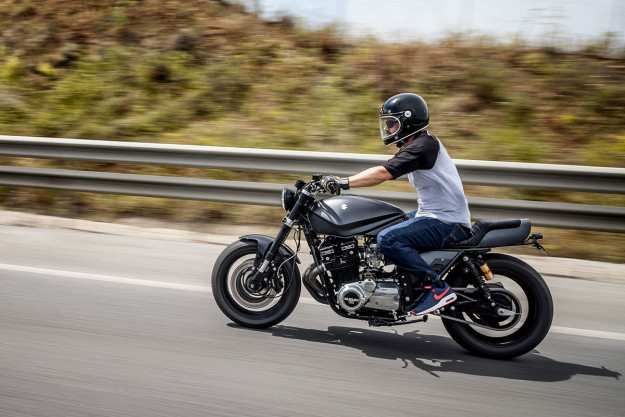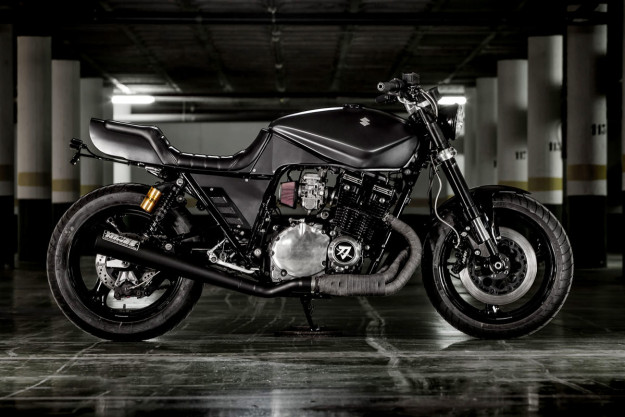
The Suzuki Katana is a bit of an oddball by today’s design standards. But it was hot property in its heyday—and those who love it never seem to shake the attraction.
Take Peter, the owner of this particular Katana. An Englishman living in Spain, he spent his youth thrashing his 1984 GSX1100 in both countries.
When it was time to upgrade to something fresher, he couldn’t bring himself to sell it. So he parked it in the shed, with the intention of reviving it later. After eight years, he finally dragged the Katana out and handed it over to Jose and Tito at Macco Motors.

“It was dirty and rusty; a real mess”, says the Spanish duo. Their mandate was to give the bike both new life and a new look—and improve performance along the way.
“We realized that this was going to be our biggest challenge at Macco Motors, not only for the design but for the reconstruction of the engine and the whole bike. And, looking at all these problems, we said: ‘Yes! Of course!’”

The ‘Zook was promptly wheeled into the Macco workshop, and the guys starting bouncing concepts around. “Our first thought was: ‘Wow, a Suzuki Katana! This is perfect for a café racer.’” Their ideas included clip-ons, a solo seat and a fuel tank swap to accentuate the bike’s straight lines and brawny-looking engine.
But when they presented their ideas to the client, he threw a massive spanner in the works. He wanted handlebars with some rise for comfort, a pillion seat for riding with his girl and—most importantly—he wanted to retain the Katana’s instantly recognizable tank.

“Peter has both arms fully tattooed, and we noticed that one of the tattoos was of the Suzuki Katana logo. So we decided not argue about the tank or anything else, and got stuck into the new design.”
Tito and Jose dove right into Photoshop to rethink the bike’s overall look—starting with two sets of side panels that would tie in with the tank. The seat needed the most work though. Bouncing between on-screen mockups and a scale model, the guys eventually pitched a bum-box style tail that could still accommodate a pillion.
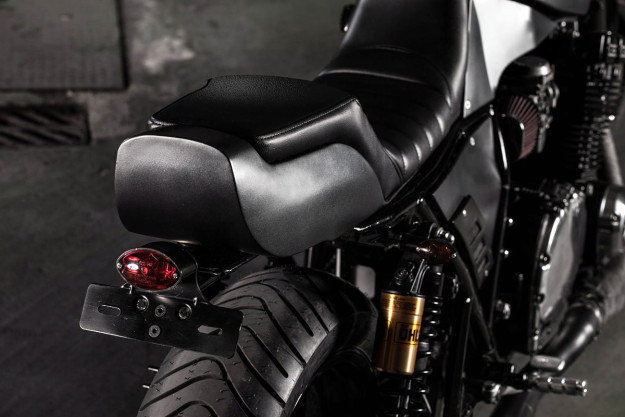
Peter was into it, and fabrication could begin. Macco chopped the subframe and welded on a new, shorter one. Then friend and collaborator, Manolo Gallo, hand-hammered the steel side panels and the seat, ensuring it was tough enough to support the extra weight of a passenger.
But that was child’s play compared to the engine work that awaited the team.

“When we collected the bike, it didn’t have an air box on, and there was a dead little gecko inside one of the air intakes. It was incredible that, after just connecting some cables and putting in some oil and fuel, the engine ran. But when we opened it we found it absolutely full of mud.”
The engine now looks factory fresh, thanks to a full overhaul inside and out. A set of K&N filters and a Vance & Hines exhaust (with no dB killer) help it breathe better.
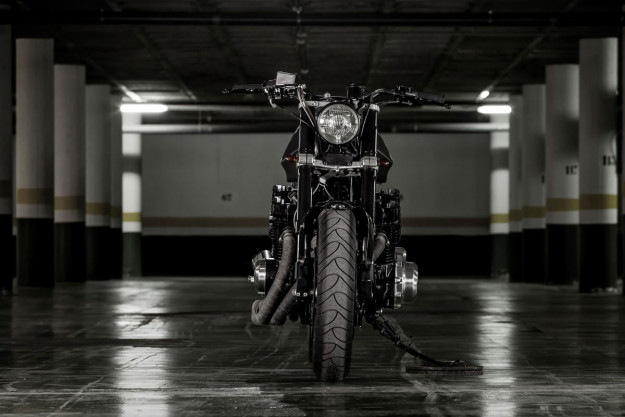
To improve the suspension, a full Suzuki GSX-R750 front end was grafted on, via a new set of triple trees with an AMB top yoke. The new setup includes the GSX-R’s USD forks, Nissin 4-pot calipers and 17-inch front wheel.
To match that out back, Macco installed the brakes and 3-spoke alloy rim from a 96-spec Suzuki GSF600 Bandit, bumping the rear tire width up to 150. Rear suspension duties are down to a pair of Öhlins shocks.
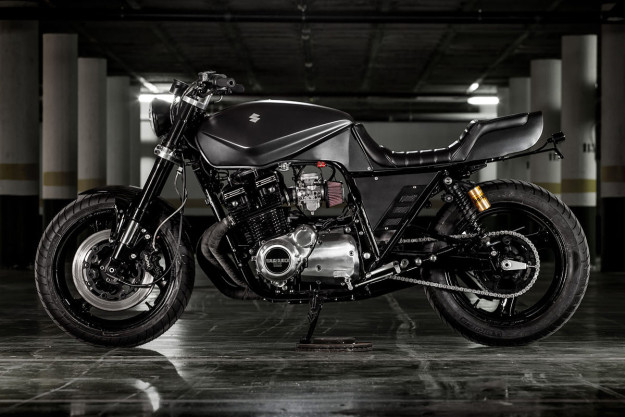
The cockpit’s kitted with Renthal Low bars, a simple analog speedo and a pair of Avon grips. There’s also a Bates-style headlight, a smaller tail light and turn signals, and alloy foot pegs. The front mudguard’s another GSX-R part, trimmed to fit.
The Katana’s final finish is predominantly back. And, to be honest, we can’t think of a better color scheme to accentuate its brutal lines.
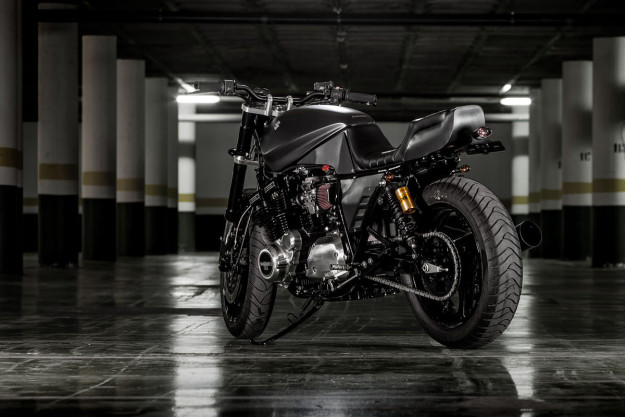
“When we finished the bike, and after we’d tested it, we took it to its proud owner. He calls it a ‘retro fighter,’ but we call it ‘Iron Fist’.”
“We told him not to feed it after midnight, just in case.”
Macco Motors | Facebook | Instagram | Photos by Sergio Ibarra from Semimate.
